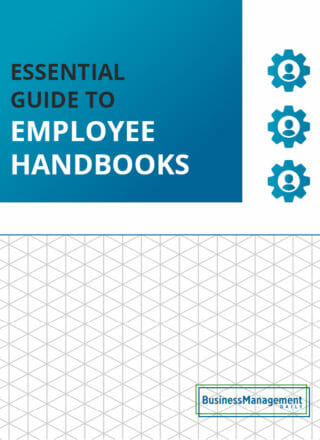Imposter syndrome in the workplace: Signs, causes, and solutions
Most people are skilled in at least one thing, making it easy to find hobbies and pastimes. Unfortunately, this doesn’t always translate into finding meaningful work (which is why many of us—especially liberal arts grads—work in jobs unrelated to our passion or unique skill set).
Working outside your wheelhouse could be better, but it comes with the territory of accepting work at someone else’s company. Over time, you’re expected to gain proficiency with the skills and expertise needed to do a great job at work.
But for some high achievers, the struggle to gain competency feels overwhelming. They think they shouldn’t need to catch up—they should be as proficient as everyone else, even on their first try.
Imposter syndrome is a type of thinking in which regular workplace challenges become loud, clanging proof that you don’t belong there like you shouldn’t have taken the job in the first place.
To suffer from imposter syndrome means believing that anything less than perfection is not only strange and wrong but also irritating and distracting to everyone else. You spend at least part of your day worrying that you’re not good enough, that your poor performance wastes your team’s time by making them fix all your mistakes, and so on.
In a cruel twist of fate, the yearning to be better at your job creates negative thoughts that make you worse.
Imposter syndrome is a stressor that hinders employee performance, and managers need to spot it quickly if they are to take steps to prevent it.
What is imposter syndrome in the workplace?
Imposter syndrome is a mental pattern in which people doubt their skills, talents, or accomplishments. They fear being exposed as frauds, regardless of their level of competence. Psychologists Pauline Rose Clance and Suzanne Imes first described it in the 1970s, but it is increasingly relevant as work environments become more competitive.
Imposter syndrome isn’t a formal diagnosis—it’s a set of feelings and beliefs experienced by about 70% of people, and it can significantly impact one’s professional life.
What does imposter syndrome look like?
What do King Arthur and Frodo Baggins (from Lord of the Rings) have in common? Both feel unworthy of the power they are given. They’re sure someone else would do a better job and worry constantly about how badly they’re performing.
Your work may not be as pivotal as destroying an evil, all-powerful ring, but feelings of self-doubt can make it feel just as dire.
Feeling like a fraud scares people into all kinds of unhealthy behaviors, with symptoms of imposter syndrome looking like:
- Perfectionism: Setting impossibly high standards and being overly critical of your work
- Overworking: Working extra hours to “prove” you belong
- Undermining your achievements: Blaming success on luck or factors other than skills
- Fear of failure: Avoiding new challenges or opportunities out of self-doubt
- Difficulty accepting praise: Rejecting positive feedback or compliments
- Constant comparison: Measuring yourself against colleagues and always coming up short
- Self-sabotage: Unconsciously undermining success with oversleeping, substance abuse, interpersonal conflicts, or other behaviors
- Procrastination: Putting off work out of fear that you won’t measure up
- Anxiety about performance: Constant worrying about work
- Feeling like a “soloist”: Reluctance to ask for help for fear that you might look incompetent
Seasoned employees tend to feel imposter syndrome less often than newbies, but you’d be surprised at the people affected.
“You don’t belong, and one day you’re going to get exposed, and everybody will know you for the fraud you are.”
That’s how Gold Glove baseballer Steven Kwan puts it. His feelings echo the sentiments of Olympic gymnast Suni Lee, who also named a lack of confidence her biggest struggle despite winning gold for the US in 2021.
Anyone—anyone—can experience imposter syndrome.
The adverse effects of imposter syndrome
It’s easy to see how the stress of feeling underqualified hurts productivity. It’s a distraction that snatches people from focusing on work and into a blur of unending second-guessing.
Imposter syndrome can have severe impacts on teams, such as:
- Decreased productivity from overanalyzing work
- Missed opportunities for promotions or taking on new projects
- Burnout from constant stress
- Low team morale
- Higher turnover as employees seek less demanding roles they feel they deserve
- Stifled creativity and risk-taking
- Communication breakdowns from withheld ideas and concerns
- Increased workplace stress
- Lower job satisfaction
- Health issues from chronic stress
Not great. Workplaces rife with imposter syndrome don’t perform as well as they could if they wanted their employees to feel valued and important. So, what’s stopping them?
Work trends that contribute to imposter syndrome
The current work landscape could be better for employees, as evidenced by the last decade’s rampant layoffs, mergers, and bankruptcies. Employers have the upper hand, and employees who ruffle any feathers risk being cut off as a “bad culture fit.”
Why do employees doubt their place in an organization? Is there a way for employers to assuage those fears through positive action? Yes, but first, they should understand where those fears originate.
Mass layoffs don’t relax anyone
There’s an unspoken PTSD that follows witnessing a mass layoff. With no immediate way to make a living, layoff victims feel a sense of inadequacy and self-doubt as their savings dry up in search of a new job that maintains their standard of living. Naturally, they don’t want to experience unemployment again after that.
This fear of being another statistic in an all-but-guaranteed future layoff drives people to overwork to prove their value to the company. This, in turn, sets unrealistic standards for themselves and others, further fueling imposter syndrome.
One way to help prevent imposter syndrome is to provide job security. Don’t use layoffs to cut costs and drive shareholder value. Help employees build lasting careers. Recognize the hard work of individuals. If this philosophy doesn’t appeal to you, don’t be surprised if your employees feel stressed out.
Enforce employer boundaries
Remote work and always-on communication make it all too easy for employers to contact teams at all hours of the day. For those with imposter syndrome, this creates an expectation that working anything less than 24/7 is unsatisfactory. If you can’t stick it out and work nonstop, that’s your problem.
No matter the role, employees need a chance to turn off their work brains and check out. Keeping them on call sends a message that no one and nothing is good enough, even when their work is up to standards.
Try to limit work contact to within working hours. Let employees recharge today so they can do good work tomorrow.
Give out recognition often
It’s easy to forget that people need positive feedback. When things go well, employees should know about it; otherwise, they may needlessly harbor feelings of inadequacy.
Make time to tell people they’re doing a good job. Boosting their self-confidence is a free, effective way to combat imposter syndrome.
Where imposter syndrome comes from?
There’s nothing weird about feeling like a crap human—sometimes you feel pretty pathetic—but the pangs seem to hit harder when you see others thriving. This is especially true of social media.
LinkedIn and Instagram have become soapboxes for people to brag about depriving themselves of food, sleep, and friends to pursue a more fulfilling life and career. Even though it’s only a sliver of truth, it’s hard not to compare oneself. With a little more work, you could have the same magnificent life.
Here’s the truth: life is mostly boring. Most work days are the same, and while there may be a chance to spread your wings here and there, you’re doing just fine by keeping on top of basic tasks. Spending every weekend abroad gets tiring even for Instagram celebrities, so don’t fall for the “grass is greener” illusion.
Do your job, let others do theirs, and take opportunities to learn when and where you can.
Types of imposter syndrome
Dr. Valerie Young, Ed.D. wrote the book on imposter syndrome (literally), where she identifies five archetypes of how it manifests. Knowing them can help you as a manager spot imposter syndrome stress in team members and nip it in the bud before it spirals out of control. You probably recognize them already:
- The Perfectionist: Sets wildly ambitious goals and suffers major self-doubt when they can’t meet or reach them.
- The Superhero: Pushes themselves to work harder than necessary to prove they belong there.
- The Natural Genius: Judges their competence based on how quickly and efficiently they do things rather than how consistently they try.
- The Soloist: Has to do everything independently, fearing that asking for help will make them look weak or incompetent.
- The Expert: Fears being exposed as inexperienced or unknowledgeable.
These aren’t healthy behaviors! Perfectionism is unsustainable, no matter how much alpha, hustle, or rockstar these behaviors exude to others watching. Sooner or later, it will have consequences.
Overcoming imposter syndrome at your workplace
Creating a healthy work-life balance with clear boundaries is the easiest way to prevent imposter syndrome from creeping into your workplace. When office culture values employees’ time and lifestyles, they feel respected for who they are rather than judged for who they aren’t.
Here are a few ways to foster that kind of culture at work:
- Schedule regular check-ins: One-on-one meetings help build rapport and create pathways with employees. This makes it easier to discuss progress and challenges and provide support.
- Initiate professional development plans: Give employees suggestions for how to grow at work, then personalize those plans to start building their future. This creates a stable trajectory for growth and experience.
- Organize peer support groups: Employee Resource Groups (ERGs) are an excellent, accessible way for team members to share experiences and coping strategies with each other.
- Offer flexible work arrangements: Let employees balance work and personal life in the best way for them. If they do better work from home, mandating a return to the office won’t help them improve.
- Develop recognition programs: Formal systems that regularly acknowledge and reward good work go a long way in helping struggling employees feel valued.
Employees are your most valuable asset. Investing in their mental health and well-being will pay dividends in productivity, loyalty, and innovation.
The role of leadership in addressing imposter syndrome
As a leader, your job is to give your team members what they need to succeed. You can help to create an environment that reduces imposter syndrome by:
- Modeling vulnerability and self-compassion by sharing experiences with struggles and growth
- Providing clear expectations of what success looks like for each role
- Offering constructive feedback that balances criticism with genuine recognition of employee strengths and improvements
- Creating a psychologically safe environment where risk-taking is encouraged, as is learning from mistakes
- Staying aware of unconscious biases that cause imposter feelings in underrepresented groups
Employees want to do their best, and that’s much easier to do when they feel locked in at work. Help them get there by meeting them where they are, recognizing their strengths, and giving them ample chances to succeed.
If employees build the expertise others can rely on, they’re no longer imposters—they’re irreplaceable.
More Resources:
Workplace resilience: The key to thriving in challenging times
Digital age workplace: Why soft skills matter more than ever
Unconscious bias training: What it is & how to improve your workplace






